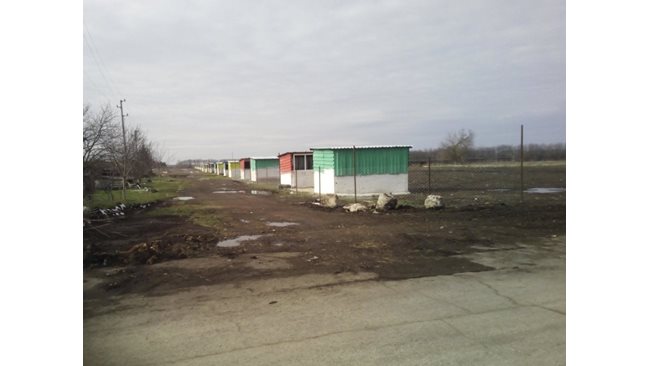Unsuccessful amendment in 2017 in the Renewable Sources Act corrupted an otherwise meaningful idea
Only solar power plants up to 30 kilowatts have preferential tariffs – energy distribution companies register hundreds of “investors” in remote villages
A new type of investors in renewables has emerged in the energy sector. These are people and companies that buy at low prices dilapidated and abandoned houses with land to them in remote villages, installing on their roofs photovoltaic panels with a capacity of up to 30 kilowatts.
There has not yet been a tidal wave as in 2012, but the interest is noticeable because
the little ones
power
remained
the only ones
whose current
mandatory
is bought on
preferential
prices
The idea of the legislator in the Renewable Energy Act was to encourage the installation of solar panels on the roofs, as well as the installation of other small renewable energy sources, such as a wind turbine in the yard, and their electricity to be used for own needs. In this way, electricity would be consumed at the place where it is produced, saving on transmission costs.
To date, only power plants up to 30 kilowatts have remained at preferential prices and with long-term contracts for the purchase of electricity for 20 years.
The condition is that they are on roof and facade structures, the properties are connected to the electricity distribution network, allowing their installation on buildings that belong to these properties.
However, good intentions have bad consequences. Real estate companies are registering increased interest in buying old houses and the land around them. An investor in the Pleven region, for example
has built on
such properties
40-50 power plants
of 30 kilowatts. Thus, individually, they are included in the option for mandatory purchase of electricity at preferential prices, and in fact the total capacity is 1.5 megawatts, which is an average power plant. There is no such consumption in this village and the investor sells the produced electricity to the electricity distribution company, because the law indicates so.
There are similar cases in the Blagoevgrad region, confirmed sources from the Energy and Water Regulatory Commission (EWRC).
For the period from July 1, 2020 to June 30, 2021, the market price of electricity, determined by the EWRC, was BGN 90 per megawatt-hour, and from solar power plants – BGN 94.96.
For the same period, however, the preferential price of electricity produced by photovoltaics with a capacity of up to 5 kilowatts was BGN 238.07 per megawatt-hour, and from 5 to 30 kilowatts – BGN 198.27.
It is this impressive difference that explains the interest in “decorating” the abandoned villages in question with photovoltaic plants.
“24 Chasa” requested data from the electricity distribution companies for the connected rural solar power plants in the last year, two.
Energo-Pro announced that in 2020 to the network of the electricity distribution company in Northeast Bulgaria – ERP North,
are joined
226 power plants to
30 kilowatts,
as the total number of connected at the moment is 339. Their total power is about 10,000 kilowatts.
The company encounters difficulties when customers circumvent the law and install power plants in yards in depopulated villages where there is no electricity consumption.
Several of the most common schemes have been detected. One is by installing power plants in dilapidated buildings, uninhabitable. Another approach is to show a notary deed for a residential building with a built-up area of 100 square meters, but an on-site inspection shows that it is a warehouse for inventory of 10 square meters.
Often empty spaces are bought in villages with almost no inhabitants and
are being built
“Warehouses for
inventory ”, which
consist of
several sheets
Since the beginning of 2021, the cases of buying a large property, dividing it into smaller ones, illegally constructing “one-storey buildings”, and the respective municipality has issued a “certificate of tolerance”, which makes the building legal. Then the procedure for connection to the electricity network is started, and subsequently for the construction of a photovoltaic power plant.
In all such cases there is no use of electricity, the buildings are repaired or built only to connect power plants up to 30 kilowatts.
Energo-Pro recalls the ambitious goal set by the European Commission to reach 32% of the share of renewable sources in gross final consumption. But according to the company in practice in these cases
is bypassed
the requirement
photovoltaic
power plants yes
be predominantly
for own
consumption,
and on roofs and facades of buildings. Often the panels are placed on the ground or on uninhabited panel buildings.
“This makes it very difficult for ERP North to plan investments in infrastructure, increase technological losses in the network, burden customers with much more investment than would be made if the installations were built on roofs with normal places of consumption.”
The company has not received any requests for connection of wind power plants up to 30 kilowatts for the purpose of selling electricity at preferential prices.
CEZ reports that for 2020
joined
photovoltaic
objects with
power below 30
kilowatts are 656
For comparison, in 2019 this number was 340, and in 2018 – 266.
Since the beginning of this year, 1,247 opinions have been issued and 750 accession treaties have been concluded. Over 90% of the submitted requests for connection are for the purpose of selling the entire amount of energy produced.
The sharp increase in interest in photovoltaic projects is probably due to the good purchase price of energy and the significant reduction in the prices of panels and inverters, according to the company.
And according to the third energy distribution company – EVN, the problem with photovoltaic power plants up to 30 kilowatts and its impact on the development of the electricity distribution network has appeared with the amendments to the Renewable Energy Act in 2017. They have decided to pay preferential prices only the electricity produced by small power plants at the sites where it will be consumed.
The practice in Bulgaria has shown a discrepancy with the European goal for production of renewable energy for own needs, because the energy produced by these plants is not used on site, but is purchased at preferential prices and transported over the network over long distances to other sites, according to from EVN.
From the adoption of the amendments to the law in 2018 to the beginning of 2021 in Southeastern Bulgaria, where EVN operates,
are introduced
in operation
405 such
power plants with common
installed
power from
11,375 kilowatts
The total annual amount of electricity produced by them is 15,015,000 kilowatt hours.
At the same time, the annual amount of electricity consumed by the sites on whose territory they are built – mostly old rural houses and yards, is 189,810 kilowatt hours. In other words, only 1.26% of the energy produced is consumed at the place of its production. The other is transmitted over the network.
According to EVN, the number of unfinished procedures for connecting such plants is 293, for which an installed capacity of 8290 kilowatts is planned. Thus, the total installed capacity of the power plants up to 30 kilowatts on the territory for which EVN is licensed will increase by 19,665 kilowatts compared to October 1, 2018.
A factor for the revival in this construction of photovoltaics is that the legal framework requires the plant to be built in an existing site with an attached building, with the presumption that there is consumption in it and the owner of the site will use the energy produced. The lack of effective control for connecting the energy produced by the plant with the one consumed by the site, as well as the possibility for such plants to be built not only on the roofs and facades of buildings (which is a physical constraint), but also in the adjacent yards distort the logic of the European directive. , according to EVN.
They build them in one or two months
Low property prices in
desolate small villages do
the investment is extremely profitable
The construction of a small photovoltaic plant up to 30 kilowatts is already a relatively fast process and can take place within 1-2 months. Due to economic reasons: cheap land with existing and connected to the network properties, the construction of such plants began to happen by individual investors not for their own consumption, but in villages where the price of buildings and adjacent yards is many times lower than large cities.
The problem is that the distribution network in these villages
historically not designed
to take on such a number of manufacturers
of current and carry their
energy to substations,
which are often tens of kilometers away. In some cases, the terrains are even located outside the construction boundaries of a settlement, which means that the losses in the transmission of this energy to the place of consumption are even greater.
Such a problem does not exist in large settlements, where the network can take over such production. However, there is no such investor interest.
In order to satisfy the investment projects of individual companies to build dozens of small power plants in such areas, it is necessary
network operator to start
to make serious investments
in the network of these villages
only to ensure the transmission of energy from power plants without the need for customers living there. Often these are villages with a declining population, where it is clear that there will be no increase in consumption in the foreseeable future and there is no need to increase network capacity.
This makes these investments extremely inefficient, they do not even improve the overall condition of the network for all customers throughout Bulgaria.
“In order to avoid this imbalance, it would be logical to buy energy at preferential prices.
to be bound by law
with the used electric
energy in the object,
to which the power plants are built, which is the European logic “, EVN believes.
Sources from the energy regulator say they have tried to curb this boom in rural solar power plants by reducing the preferential price. For photovoltaics up to 5 kilowatts before it was BGN 238.07 per megawatt-hour, and from July 1 it is BGN 193.33. For photovoltaics up to 30 kilowatts it was reduced from BGN 198.27 to BGN 160.11 per megawatt-hour . The estimated market price is BGN 119 per megawatt-hour.
According to experts, the preferential price for photovoltaics will cover the investment, but will not allow the purchase of real estate – abandoned houses and yards. And according to them
the net of the erepets
is not built for return
of grid energy
low voltage,
and the conversion to medium voltage brings technological losses.
However, a more radical decision will have to be made by the next parliament.
– .

:quality(80)/cdn-kiosk-api.telegraaf.nl/bb5e1eb6-e868-11eb-a690-02d1dbdc35d1.jpg)
